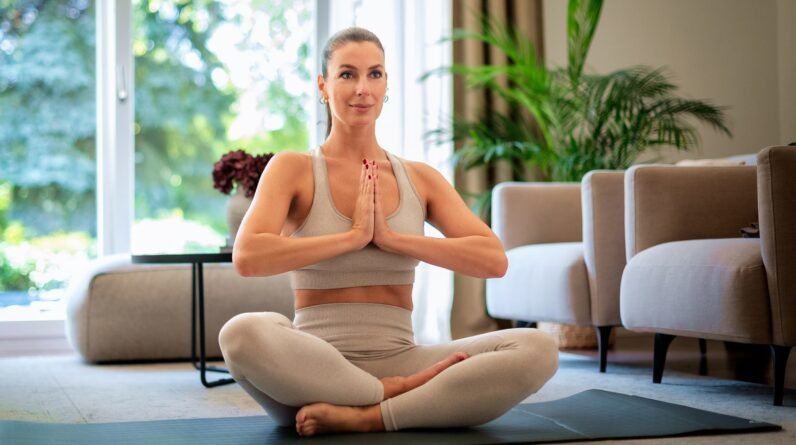
Every couple of years, athletes from around the globe gather to compete at the Olympics to prove they’re the best of the best. Besides the countless hours of training they pour into perfecting their sport, these athletes also strive to stay healthy and injury-free so they can go for gold. That’s where Team USA’s troupe of trainers and doctors come in—it’s their job to keep Olympians in peak condition at the Games.
Brian Krabak, MD, a Seattle-based sports medicine physician with the University of Washington, is one of those doctors. He’s worked with Team USA since 2002 as a general physician, and will be returning for his fourth Olympic Games this year in Paris—his first with the U.S. swim team. He’ll work with the team to keep them healthy in and out of the pool.
Here, Dr. Krabak gives us a behind-the-scenes look at being a doctor for Olympians, including how he was selected for the esteemed position and what it’s like day to day at the Games.
How do doctors get selected for the Olympics?
Dr. Krabak first got the idea to partner with Team USA while living in Baltimore, Maryland, and working as a sports medicine doctor at Johns Hopkins University. “Pretty much all my swimmer friends would come to me with their injuries, and there was a future Olympian coming up the ranks at the time, Michael Phelps. Swimming was really getting some buzz,” he says.
“Someone suggested that Team USA was looking for doctors to travel with teams and that I should apply,” Dr. Krabak recalls. He threw his name in the hat, and one year later, he got the call from the U.S. Olympic & Paralympic Committee (USOPC) to visit California for a swimming invitational (which helps athletes qualify for the Games). While there, he says he helped support the team with medical care.
While it may seem like an easy process, applying to become a doctor for Olympians is almost as competitive as the Olympic trials themselves. According to the USOPC website, doctors apply through the committee’s sports medicine volunteer program. If selected, they can choose from (and provide care at) a rotation of qualifier events with their sport of interest. They also have to complete trainings at one of three sports medicine facilities for the committee—in Colorado Springs, Colorado, Lake Placid, New York, or Chula Vista, California.
After successfully completing a rotation (which lasts two weeks), doctors are added to a pool to be possibly selected for an upcoming Olympic or Paralympic Games. Though for some doctors, it can take months to years of providing care at qualifier events in order to be put in the running. There’s no guarantee they’ll make it, and it’s a completely volunteer position, meaning most providers are doing it for the once-in-a-lifetime experience to support Team USA.
Dr. Krabak’s first official Olympic Games was in Athens in 2004 as a general practitioner. The 2024 Paris Olympics will be his first Games as a doctor exclusively working with swimmers.
“You have to understand the physical, mental, and emotional demands of that sport, and then have the skillset to manage the acute and chronic issues.” —Brian Krabak, MD, sports medicine doctor for Team USA
What criteria do doctors have to meet to qualify for the Games?
Team USA doesn’t take just anyone to the Olympics. The athletes are precious cargo, after all, so top doctors are needed to help them stay that way. For example, criteria for the USOPC volunteer program includes:
- A current active state medical license in the state they practice in
- Board-certification and a minimum of three years’ experience since certification
- A Certificate of Additional Qualification (CAQ) in sports medicine is recommended
- Completion of the American College of Sports Medicine Team Physician Course series is recommended
A deep knowledge of your sport of interest is also important: “In sports medicine, the first word is ‘sport,'” Dr. Krabak says. “So by understanding that sport and the unique nature of what it needs, you become an expert at providing that care.”
He adds: “Taking care of swimmer issues is going to be different than taking care of basketball players or a soccer team. You have to understand the complexity of prevention and treatment.”
He says the athletes he treats deal with a lot of respiratory illnesses from traveling (which can be troublesome for a swimmer’s lungs), overuse injuries throughout the year, fatigue, nutrition, and mental health challenges.
“By understanding that entire umbrella of care for that athlete within the swimming world, it allows you to provide that expertise,” Dr. Krabak says. “You have to understand the physical, mental, and emotional demands of that sport, and then have the skillset to manage the acute and chronic issues.”
What does a day look like when you’re a doctor at the Games?
At the Games, routine is key to maintain structure and focus for the athletes. When traveling internationally, the first order of business is adjusting to time zones and weather (many doctors will treat things like stomachaches, fatigue, or allergy symptoms during this time). Once there, Dr. Krabak says his day starts at 5 a.m. at the team’s morning pool sessions. Athletes will then rest in the afternoon and visit a massage therapist before evening training sessions.
Outside of practices and competition, Dr. Krabak and the rest of the staff monitor the pulse of the team—i.e., how they’re doing physically and emotionally. Other duties providers may complete include injury/illness evaluation, first-aid and emergency management, manual therapy sessions, injury rehabilitation, and practice coverage, per the USOPC. “The unique piece that’s added with the Games is drug testing after an athlete wins a medal. We typically accompany them to drug testing, just in case there are any issues,” Dr. Krabak adds.
They also collaborate with other doctors on the team, physical and massage therapists, coaches, and nutritionists in order to give athletes the most comprehensive care. “If we’ve done our job, we’re hopefully just hanging out, keeping an eye on everyone, and watching people swim, but we’re always on 24/7,” he says.
But it’s not just the athletes that need to stay healthy. Dr. Krabak prioritizes his own health and wellness while at the Games, too. “I may get a short moment to go run on the treadmill. Self-care is just as important. I can’t take care of athletes if I’m falling over on the side and not taking care of myself. So we all have the opportunity to take short breaks.”
His long-standing rapport with athletes also plays a big role when it comes to trust and care within the team. Between training and recovery, athletes and staff are bonding with each other. “The beauty of traveling with Team USA since 2009 is that I know at least 90 percent of this team,” Dr. Krabak says. “I’ve seen them grow up. It’s like watching your kids grow up.”
“We like to joke that the doctors should be the most bored people on the trip…If we can provide that care, stomp out fires before they happen, and make sure people are good with their movement, then we’re doing our job,” he adds.
What’s something the average person wouldn’t know about the USA swim team?
It’s hard to imagine world-class athletes as everyday people, but Dr. Krabak says they’re more normal than we think. “These athletes are like you and I. They have this talent, but behind the scenes, we’re like a family,” he says. “They sit there playing Mario Cart, or talking about Netflix.”
While these are the most amazing athletes in the world, he adds, they follow the same principals we should all follow for our overall health and care.
“What I treasure the most is that these very disciplined people are still young adults who are trying to attain a goal and they do very similar things that we do,” he says. “They get up and joke around, and they are extremely gifted and dedicated to what they do. Sometimes we lose that personal aspect of it.”







